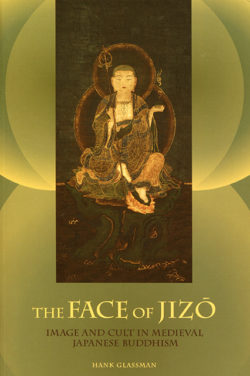The Face of Jizo: Image and Cult in Medieval Japanese Buddhism
University of Hawai'i Press
“Farther on, I find other figures of Jizo, single reliefs, sculptured upon tombs. But one of these is a work of art so charming that I feel a pain at being obliged to pass it by. More sweet, assuredly, than any imaged Christ, this dream in white stone of the playfellow of dead children, like a beautiful young boy, with gracious eyelids half closed, and face made heavenly by such a smile as only Buddhist art could have imagined, the smile of infinite lovingness and supremest gentleness. Indeed, so charming the ideal of Jizo is that in the speech of the people a beautiful face is always likened to his—‘Jizo-kao,’ as the face of Jizo.” —Lafcadio Hearn, Glimpses of an Unfamiliar Japan (1894) Stone images of the Buddhist deity Jizo—bedecked in a red cloth bib and presiding over offerings of flowers, coins, candles, and incense—are a familiar sight throughout Japan. Known in China as a savior from hell’s torment, Jizo in Japan came to be utterly transformed through fusion with the local tradition of kami worship and ancient fertility cults. In particular, the Jizo cult became associated with gods of borders or transitions: the stone gods known as dosojin. Although the study of Jizo is often relegated to the folkloric, Hank Glassman, in this highly original and readable book, demonstrates that the bodhisattva’s cult was promoted and embraced at the most elite levels of society. The Face of Jizo explores the stories behind sculptural and painted images of Jizo to reveal a fascinating cultural history. Employing the methodologies of the early twentieth-century renegade art historian Aby Warburg, Glassman’s focus on the visual culture of medieval Japanese religion is not concerned with the surface form or iconographical lineages of Jizo’s images, but with the social, ritual, and narrative contexts that bring the icons to life. He skillfully weaves together many elements of the Jizo cult—doctrine, ritual, cosmology, iconography—to animate the images he examines. Thus The Face of Jizo is truly a work of iconology in the War.


